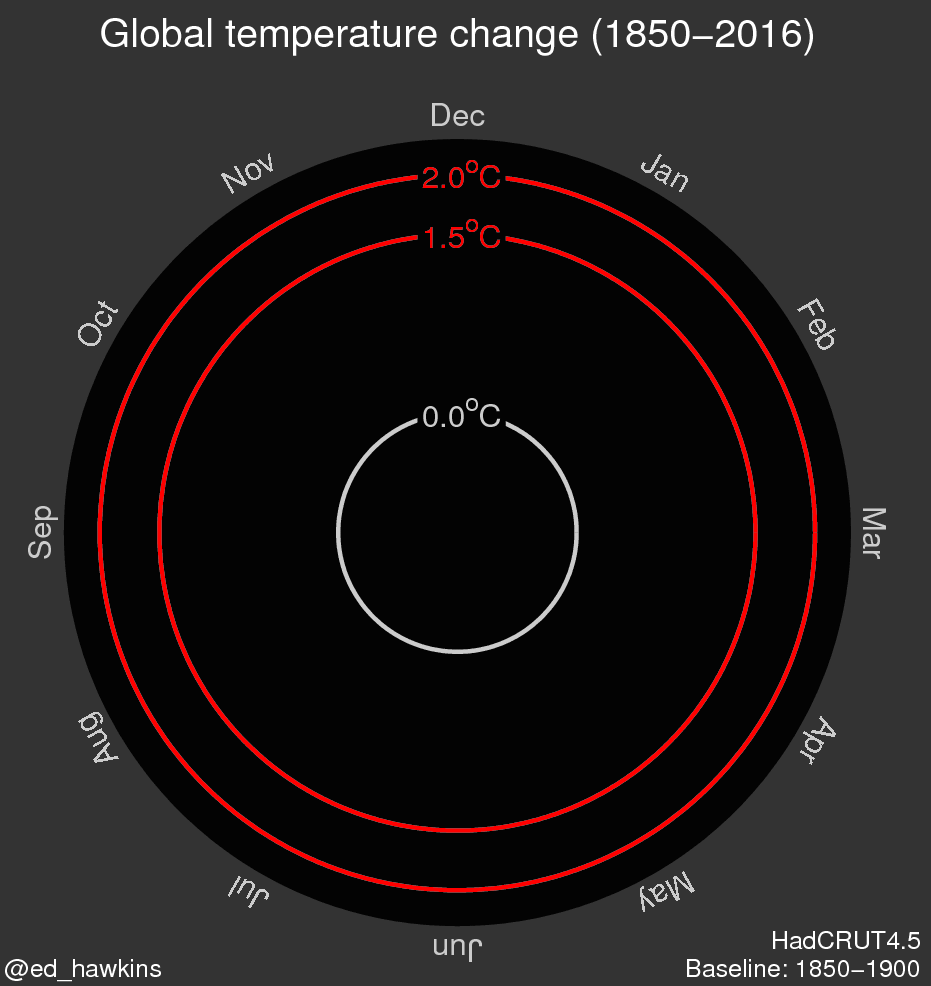Throughout the blog, I've been talking about how we have utilised both climatic and hydrological computer models to make predictions for how the hydrological cycle may change in the future, and the effect it will have on humans. This week, I'd like to focus on the overall methodology and philosophy behind this method, and address the topic of uncertainty. While the scientific community is generally in agreement in what the impacts of climate change on the hydrological cycle may be, note that in previous posts I've mostly used the words 'could' or 'may' when talking about potential changes. Nothing is set in stone, and the process of trying to predict the future is inherently something of a dark art.
In theory, the study of the effects of climate change on the hydrological cycle is undertaken to allow us as humans to understand why changes may be occurring, and how we can adapt to those changes. However, one of the key challenges in factoring climate change into management of water resources is uncertainty. In England and Wales, a small set of only three climate scenarios (derived from a variety of climate models) has been used to suggest a potential range of impacts, mostly focusing on one central scenario, and using very simple mathematical approaches to apply the scenarios (Arnell, 2011). In contrast, some approaches have used very large numbers of scenarios to assess impact (e.g. Christierson, et al. 2012), and assess the probability of certain impacts occurring, a feature that is very useful in risk assessment. However, it has been suggested that assessing the probability of hydrological changes in this way is impossible due to the considerable scientific uncertainty on how the climate system and hydrological system may change, and how to represent these possible changes. Stainforth, et al. (2007) argue that it is not possible to develop purely quantitative probability distributions of the impacts of climate change on water resources, and that the philosophy of representing uncertainty needs to change, potentially by interpreting the outcome of modelling studies less quantitatively - e.g. looking for a overall patterns and general magnitudes of change, rather than absolute values.
This really is something of a debate in the scientific community; some feel we can use models to identify the risks of hydrological change and inform adaptation, while some feel they are simply not reliable enough to do this. Koutoyiannis, et al. (2008) compare the hydrological outputs of a variety of climate models to observations around the globe, and argue that global climate models perform very poorly at a both a small and large spatial scale. Wilby (2010) develops this argument further, suggesting a conceptual divide in the hydrological science community between those who advocate a scenario-led approach to water resource adaptation, and those who feel scenarios are better used to assess potential adaptation options. Wilby notes that hydrological processes are incredibly diverse in in time, and as a result the management questions that need to be answered vary dramatically in time too, spanning minutes for real time flood protection through to multiple decades for provision of water. It is suggested that climate models are not reliable enough to answer the questions required for future adaptation as a result of their inability to accurately reproduce the temporal characteristics found in hydrological records.
The other side of the debate are those who think models are robust enough to inform hydrological adaptation, and feel that the critique of climate models is unjust. In a particularly strongly worded journal article, Huard (2011) attacks the publication of papers suggesting climate models cannot inform water management, claiming they are based on the misconception that climate models predict natural climate variability in a deterministic way, involving no randomness and always producing the same result given a certain input. Huard notes that this is indeed how hydrological models operate, but that this is not the way global climate models work. They are inherently chaotic and non-deterministic in their nature, with both the natural variability of the climate system and the influence of external factors playing a role. As such, a climate projection is not a deterministic prediction of climate, but 'an experiment probing the model's response to changes in greenhouse gas concentrations'. Assuming this, it is unreasonable to suggest that individual climate models should be able to predict past hydrological observations with supreme accuracy, given that they have to randomly simulate natural climate variability. To properly assess a climate model's performance, it is necessary to extract the response to external anthropogenic forcing from the inherent random natural variability.
Uncertainty in climate modelling is a huge topic, and I've only presented a short introduction to it here, but I think it is an extremely important topic to discuss, seeing as we are making a lot of predictions and decisions based on climate models. While it is a boring and non-controversial opinion, I sit somewhat on the fence on this issue. I certainly feel that climate models are of great value, but that they are experimental sandboxes that should be used to inform adaptation, as opposed to being what we base adaptation on. Quite frankly we do not have enough time to debate how we should interpret uncertainty, and need to actually get on with finding a framework of how to use all the data and projections available to inform adaptation!

